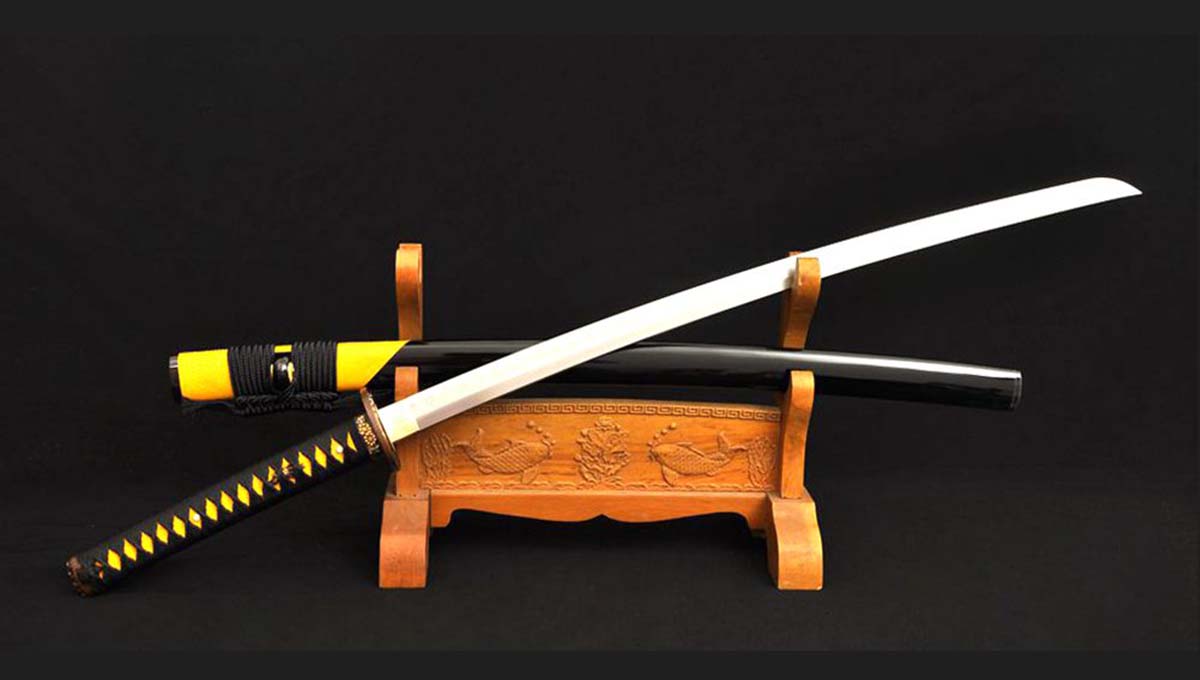For enthusiasts of the samurai katana, two critical factors often dominate the purchasing decision: aesthetics and sharpness. However, before acquiring a hand-forged samurai katana, it’s essential to understand the concepts of aesthetics and sharpness and how they differ within the realm of katana. This article delves deep into both these factors and provides insights into how to strike a balance between aesthetics and sharpness.
Considerations for Aesthetics:
Aesthetics play a crucial role in the allure of a samurai katana. It encompasses several factors, each capable of influencing the overall appearance and appeal of the katana.
- Hamon (Blade Pattern): Hamon refers to the wavy pattern visible on the blade of the katana, typically on the edge. It is a part of the forging process, created through varying rates of cooling and quenching. Hamon not only adds a unique visual charm to the katana but also reflects the skill of the bladesmith. Different types of hamon can make the katana more visually captivating. Some prefer lively patterns, while others favor more minimalist designs.
- Fittings: The fittings of a samurai katana, such as Tsuba (handguard) and Menuki (ornaments), play a critical role in the overall appearance. Their design and materials should harmonize with the blade, ensuring a sense of unity and harmony. Some fittings may be crafted from precious metals like brass, silver, or gold, adding a touch of opulence to the katana.
- Handle and Saya: The aesthetics of the handle (Tsuka) and scabbard (Saya) should not be overlooked. Exquisite handle wrappings and intricate scabbard decorations can enhance the overall appeal of the katana. The choice of materials and wrapping styles for the handle varies, catering to individual preferences. Common handle materials include genuine leather, fabric, silk cord (Ito), and even gemstones.
- Length and Weight: The length and weight of a samurai katana should align with your needs and intended use. A longer katana may be more visually striking, but it can also be heavier and less suitable for carrying. Lightweight blades may be preferable for everyday carry and use.
- Scabbard (Saya): The scabbard, or saya, is the outer shell of a samurai katana, typically used for protection and carrying. Its aesthetics and craftsmanship are also worth considering. Some scabbards are made from materials such as wood, bone, horn, or other materials, and then adorned with intricate designs, enhancing their allure.
Aesthetics often take center stage as the primary consideration when purchasing a katana. A visually captivating katana not only serves as a collector’s item for display but also provides visual enjoyment.
Considerations for Sharpness:
Sharpness is a crucial factor related to the practicality of a samurai katana. It encompasses the sharpness of the blade, its durability, and its resistance to wear and tear.
- Blade Sharpness: Sharpness typically refers to the sharpness of the blade edge. A sharp katana blade can effortlessly cut through various objects, whereas a dull blade requires more force and skill. Sharpness shines in combat and cutting activities.
- Blade Durability: Blade durability is closely tied to the choice of materials and forging process. A high-quality blade not only boasts sharpness but also maintains that sharpness for an extended period, resisting dulling. This is particularly important for regular use.
- Resistance to Wear and Tear: The sharpness of a samurai katana is also tied to its ability to withstand wear and tear. If you plan to use the katana for cutting, practice, or demonstrations, blade durability is paramount to prevent damage, bending, or loss of sharpness.
When considering sharpness, you must determine whether your katana is intended for decoration and collection or practical use. For collectors, sharpness may not be the primary concern. However, if you plan to engage in cutting, practice, or display activities, sharpness becomes critical.
Balancing Aesthetics and Sharpness:
When purchasing a hand-forged samurai katana, it is not necessarily an either-or choice between aesthetics and sharpness. Many manufacturers focus on balancing these two aspects, offering katanas that are both visually appealing and practical. These katanas are often forged from high-quality steel, meticulously crafted, and polished to ensure both sharpness and aesthetics.
Before making a purchase, consider the following recommendations:
- Research the reputation of the bladesmith and manufacturer. Opt for experienced and reputable artisans who typically provide high-quality katanas.
- Examine the specifications of the katana, including blade material, forging process, hamon type, handle material, and scabbard design, to ensure they align with your needs.
- Read user reviews to gain insights into the actual performance and aesthetics of the katana.
- Consult with experts or collectors in the field if you’re not well-versed in katana selection. They can provide valuable advice on purchasing decisions.
In conclusion, both aesthetics and sharpness are essential factors to consider when buying a samurai katana. A visually captivating katana can be a prized possession in your collection, while a sharp katana excels in practical use. Through careful selection, you can find the ideal samurai katana that meets both your aesthetic expectations and functional needs.
Keywords: katana for sale, Folded Steel, Full Tang, Japanese katana, Japanese Sword, katana sword

